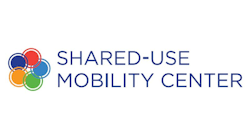Last year, the Colorado Department of Transportation (CDOT) walked back its $35-million plan to expand I-25 because it would not meet the guidelines established in the state’s newly enacted Greenhouse Gas (GHG) Standard for Transportation Planning, which limits projects’ allocated GHG emissions. Projected GHG emissions for widening I-25 measured with Rocky Mountain Institute’s (RMI) carbon calculator showed adding interstate lanes would exceed the allocated GHG emissions standard. Thanks to pressure from local and state environmental groups and the clarity of the calculator tool, CDOT revised its plan and is redirecting resources to expanding transit.
As CDOT demonstrated, if we want to hit our transportation decarbonization goals, we must develop a clear standard and a consistent way to measure and calculate carbon emissions to better inform which projects and services we should be funding. The standard helps us to set targets and inform accountability. The metrics and the calculators tell us the impacts of various strategies. The incentives and disincentives help us to reward and put resources to the most productive actions.
RMI’s carbon calculator proved what many transportation practitioners already know: Expanding lanes to decongest highways actually increases carbon emissions. To fight climate change, we need to invest in transit and other shared modes but making this case is much harder in practice. That’s why measuring the anticipated GHG emissions against an agreed-upon standard was essential to understanding the full (negative) impacts of the I-25 expansion project, something that’s missing for the industry at large.
The Shared Mobility 2030 Action Agenda recognizes creating a standardized way to measure carbon emissions for “shared mobility vehicles, technology, services and operations that show comparisons with other transportation modes” is a key step in helping people see the benefits of shared mobility. The agenda also commits us to “lowering the lifecycle carbon emissions of shared mobility services (vehicles, technology and infrastructure)."
This is a big undertaking. It’s relatively easy to calculate how shifting from an internal combustion engine vehicle to an electric vehicle (EV) can save on tailpipe emission, but it’s much harder to calculate how being multimodal — using shared vehicles like public transit and shared micromobility — can reduce carbon. Even if studies show that multimodal trips and journeys and individuals who have access to and use more transportation modes, save flying on airplanes, produce less carbon.
There are a variety of reasons why this is the case, such as the sheer amount of variables that must be accounted for, including fuel type, vehicle lifecycle costs, passenger or vehicle miles traveled and many more. Given these variables are drastically different and involve a plethora of stakeholders and reporting mechanisms, it’s clear we need a cross-sector group to find a standardized solution. We need cross-sector collaboration to be able to start comparing apples to apples.
This comparison is already happening with personal vehicle ownership. That’s probably why so much of the decarbonization conversation centers on the shift to EVs. We can easily measure and compare the outcomes of using an EV, but as we’ve said earlier in this series, shifting to EVs alone won’t address the inequities in our transportation system. It won’t reduce the number of deaths and injuries from road crashes. It won’t increase access to those who need it most.
However, decarbonization via shared mobility can address climate, equity, safety, accessibility and affordability. The Action Agenda continues, “Developing and widely using standard ways to measure the carbon emissions that shared mobility vehicles, technology, services, and operations generate allows us to compare the effectiveness of providing more shared mobility vs. just electrifying vehicles alone. It will provide a framework for policy changes based on the carbon footprints of each transportation mode. It will also allow us to set clear targets and develop plans to lower shared mobility’s carbon emissions even further.”
Creating the correct weights and measures and using them widely can change systems. If we set the right standards, use the right measures and calculate the impact for every service and project, then we can provide the right incentives to governments, to companies and to households. We can nudge the plans and behaviors that have the most impact. It can help cities and states set carbon reduction targets for transportation investments—infrastructure, incentives and regulations.
We particularly need the right weights and measures, especially as we pour billions more into transportation. We could make things worse if we’re not measuring the right things and setting the right targets.
-------------
NOTE: The Shared-Use Mobility Center has its own carbon calculator to show the benefits of more mobility options. It’s useful for better understanding what a mix of mobility options can do, but not necessarily for policy challenges or project evaluations.
--------------
Benjie de la Peña is the CEO of Shared-Use Mobility Center.





